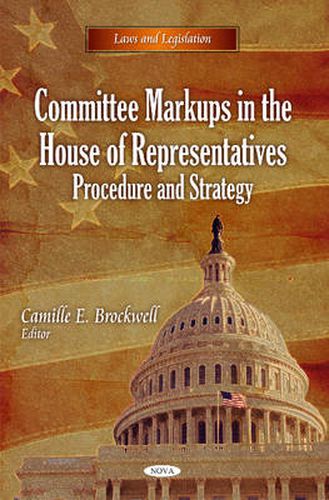Readings Newsletter
Become a Readings Member to make your shopping experience even easier.
Sign in or sign up for free!
You’re not far away from qualifying for FREE standard shipping within Australia
You’ve qualified for FREE standard shipping within Australia
The cart is loading…






The primary legislative function of standing committees in the House of Representatives is to evaluate the thousands of bills and resolutions that members introduce during each Congress. If the committee decides that it may want to recommend that the House take legislative action, the hearings are followed by mark-up meetings at which committee members propose and vote on amendments to a bill. These meetings are called mark-ups because committee members mark up the legislation before them as they decide what amendments to propose to the House. This book focuses on the mark up stage of the legislative process in committee and discusses the selection of the text to marked up, the procedures for proposing and debating amendments to the text, the voting and quorum procedures that govern mark-ups, and the final stages of ordering the marked-up text reported to the House for its consideration.
$9.00 standard shipping within Australia
FREE standard shipping within Australia for orders over $100.00
Express & International shipping calculated at checkout
The primary legislative function of standing committees in the House of Representatives is to evaluate the thousands of bills and resolutions that members introduce during each Congress. If the committee decides that it may want to recommend that the House take legislative action, the hearings are followed by mark-up meetings at which committee members propose and vote on amendments to a bill. These meetings are called mark-ups because committee members mark up the legislation before them as they decide what amendments to propose to the House. This book focuses on the mark up stage of the legislative process in committee and discusses the selection of the text to marked up, the procedures for proposing and debating amendments to the text, the voting and quorum procedures that govern mark-ups, and the final stages of ordering the marked-up text reported to the House for its consideration.